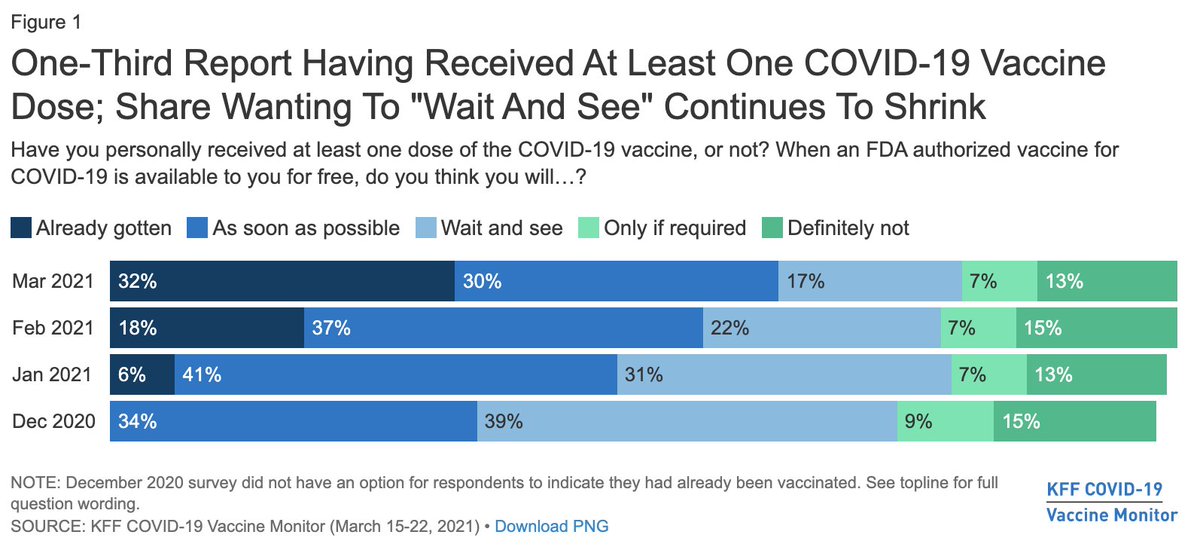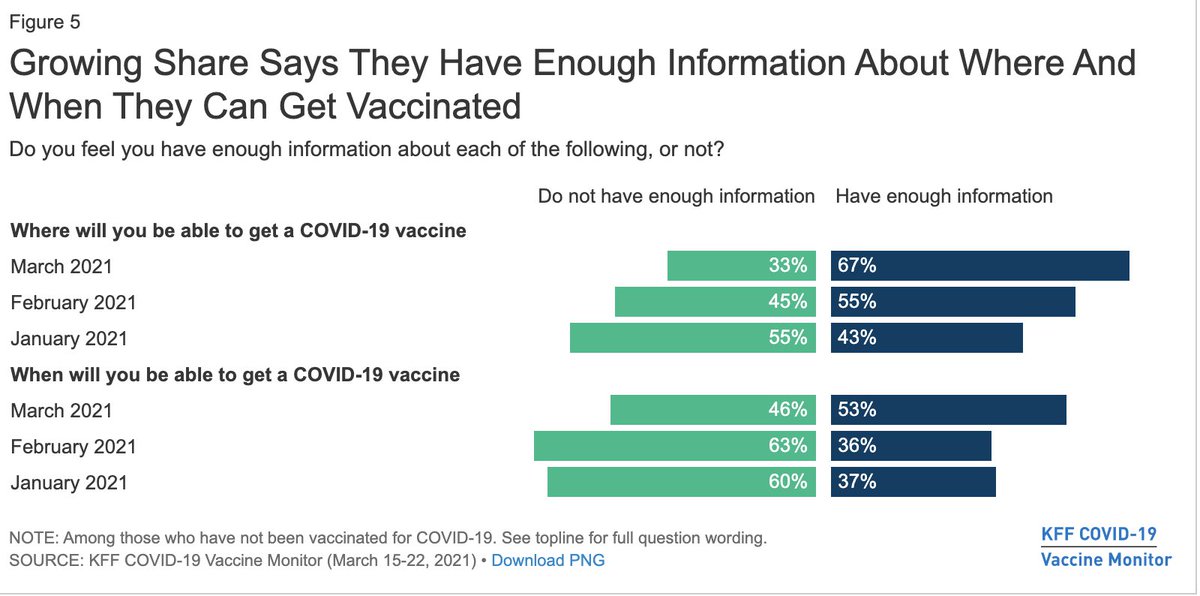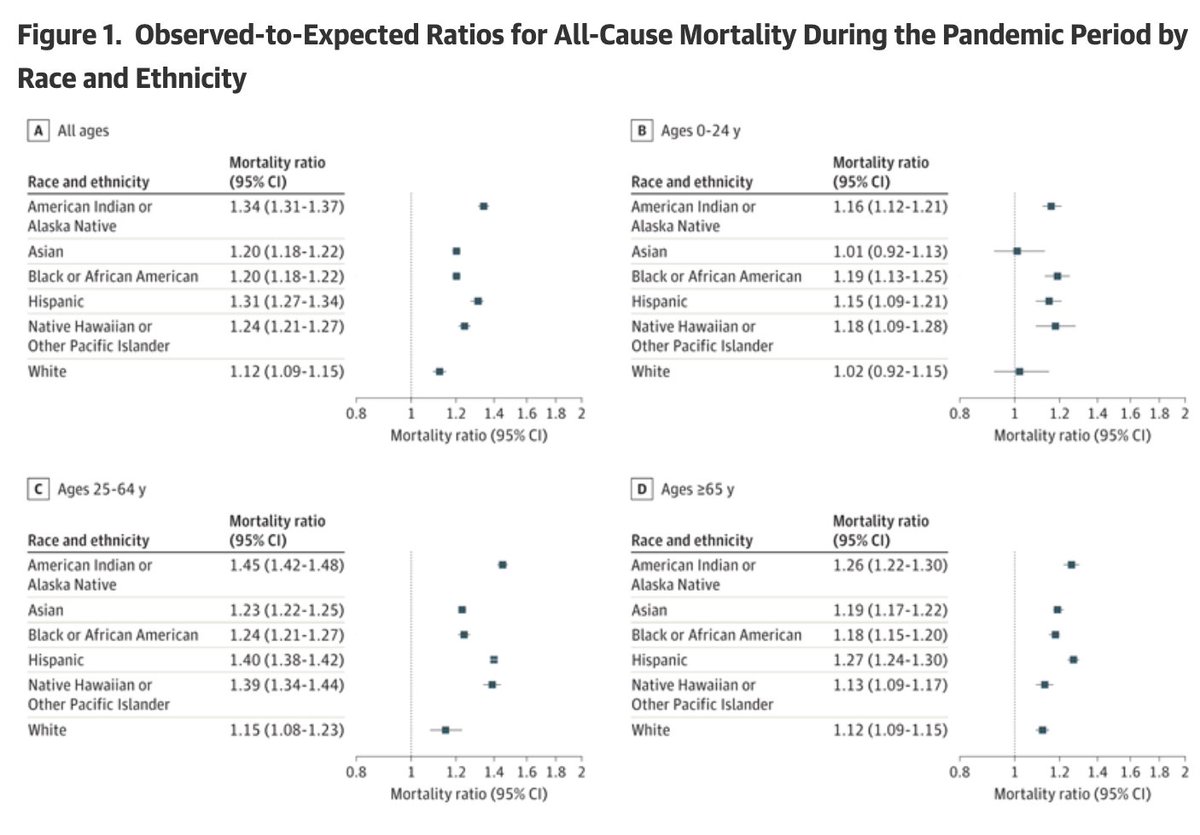We are seeing encouraging results from polls on vaccine enthusiasm and satisfaction with the rollout. A quick thread on the most recent data. From the Census Bureau, vaccine hesitancy has started to decline, driven broadly among Black Americans.
wsj.com/articles/as-co…
wsj.com/articles/as-co…

As a whole, however, the country's overall hesitancy rate remains quite constant. This underscores the importance for continuing vaccine education. 

From a Gallup poll, satisfaction with the vaccination process has surged to 68% among American adults. Some Americans are still waiting to see confirmation the vaccine is safe before rolling up their sleeve.
news.gallup.com/poll/342431/sa…
news.gallup.com/poll/342431/sa…

Lots of interesting results from this @KFF survey. The overall percentage of those unwilling to receive a vaccine has remained constant but the number of those in the "wait and see" group have declined.
kff.org/report-section…
kff.org/report-section…

More people feel they have enough information about where and when they can get vaccinated. We still have more work to do. 

One key finding among the "wait and see" group: Having the vaccine available at their primary care provider would make people significantly more likely to take it. @DrTomFrieden has pointed this out repeatedly. We need to expand access to primary care. 

If former President Trump came out with a message strongly urging people to get the Covid-19 vaccine, would that make people more likely to get vaccinated, or not? The answer is not really. 

One of the most interesting findings (in my opinion): Among the "wait and see" group, significantly more people would want to get the Johnson & Johnson vaccine due to its one-dose nature. 

However, despite increased vaccine enthusiasm, Americans report lower adherence to social distancing than ever before, even among those who are unvaccinated. We must ensure that we continue to follow these measures until cases decline.
news.gallup.com/poll/343022/so…
news.gallup.com/poll/343022/so…

• • •
Missing some Tweet in this thread? You can try to
force a refresh




















